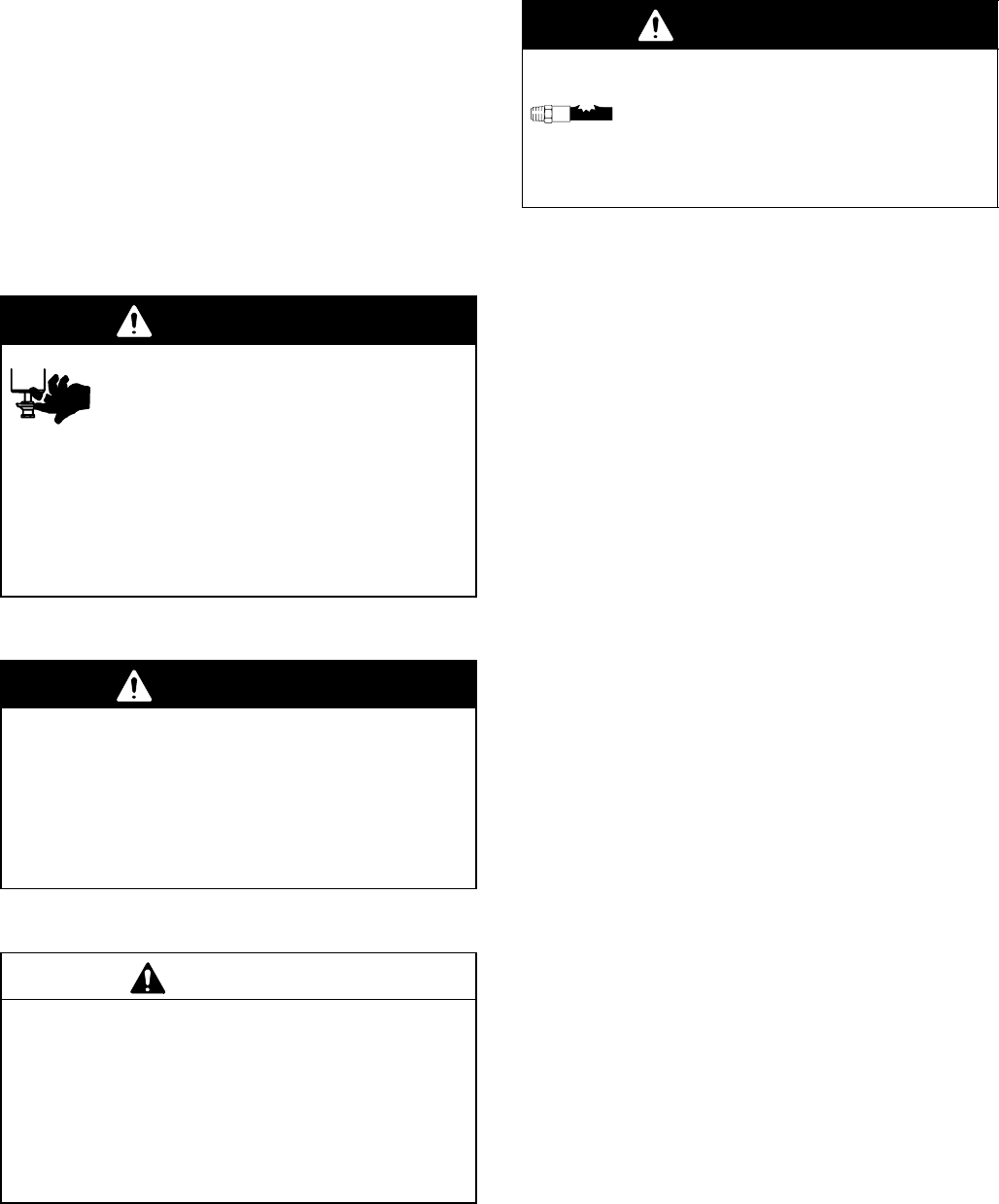
308351 13
Operation
Flush the Pump Before First Use
The pump is tested with lightweight oil, which is left in
to protect the pump parts. If the fluid you are using
may be contaminated by the oil, flush it out with a
compatible solvent. See Flushing on page 16.
Starting and Adjusting the Pump
WARNING
MOVING PARTS HAZARD
Keep hands and fingers away from the
priming piston (21) during operation and
whenever the pump is charged with air.
The priming piston extends beyond the intake
housing (19) to pull material into the pump and can
amputate a hand or finger caught between it and
the intake housing. Follow the Pressure Relief
Procedure on page 12, before checking, clearing,
or cleaning the priming piston.
WARNING
SKIN INJECTION HAZARD
To reduce the risk of fluid injection, do not use
your hand or fingers to cover the bleed hole on the
underside of the bleeder valve body (29) when
priming the pump. Use a crescent wrench to open
and close the bleeder plug (20). Keep your hands
away from the bleed hole.
CAUTION
Do not allow the pump to run dry. It will quickly
accelerate to a high speed, causing damage. If your
pump is running too fast, stop it immediately and
check the fluid supply. If the container is empty and
air has been pumped into the lines, refill the con-
tainer and prime the pump and the lines, or flush and
leave it filled with a compatible solvent. Eliminate all
air from the fluid system.
WARNING
COMPONENT RUPTURE HAZARD
To reduce the risk of overpressurizing
your system, which could cause compo-
nent rupture and serious injury, never
exceed the Maximum Input Pressure to the pump
(see the Technical Data on pages 38–46).
Air–Powered Systems
1. Supply fluid to the pump, per the requirements of
your system.
2. See Fig. 3. Close the air regulator (F).
3. Open all air bleed valves (C, E).
4. Hold a metal part of the gun/valve (S) firmly to the
side of a grounded metal pail and hold the trigger
open.
5. Slowly open the air regulator until the pump starts.
6. Cycle the pump slowly until all air is pushed out
and the pump and hoses are fully primed.
7. Release the gun/valve trigger and lock the trigger
safety. The pump should stall against pressure.
8. If the pump fails to prime properly, open the
bleeder valve plug (20) slightly. Use the bleed hole,
on the underside of the valve body (29), as a
priming valve until the fluid appears at the hole.
See Fig. 5. Close the plug.
NOTE: When changing fluid containers with the hose
and gun/valve already primed, open the bleeder valve
plug (20), to help prime the pump and vent air before it
enters the hose. Close the plug when all air is elimi-
nated.
9. With the pump and lines primed, and with ade-
quate air pressure and volume supplied, the pump
will start and stop as you open and close the
gun/valve. In a circulating system, the pump will
speed up or slow down on demand, until the air
supply is shut off.
10. Use the air regulator (F) to control the pump speed
and the fluid pressure. Always use the lowest air
pressure necessary to get the desired results.
Higher pressures cause premature tip/nozzle and
pump wear.
